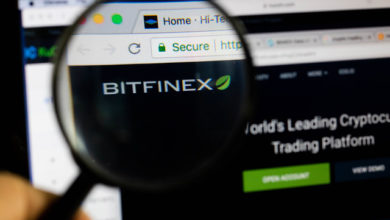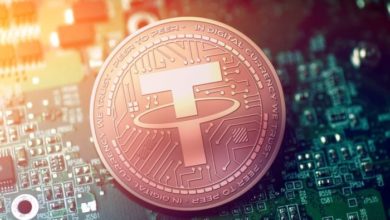
The much-anticipated news is here. Finally, after a long period of waiting, the U.S Securities and Exchange Commission (SEC) has decided to shed some light on the guidelines that will help in the process of qualifying digital assets as securities.
With the rise of cryptocurrencies, ICOs and STOs, there has been a rush of questions, mixed with a sense of excitement that usually accompanies the introduction of “something new.” Many concerns have emerged regarding investor’s protection and market security. It is then, coupled with their mission to protect investors, “maintain fair, orderly and efficient markets and facilitate capital formation”, that the SEC has issued regulatory guidelines for token issuers and investors.
In December 2017, the U.S SEC’s Chairman, Jay Clayton, released a statement on cryptocurrencies and ICOs. Fast forward a little more than two years later, the SEC has finally released further guidelines. They came nearly six months after the SEC Director of Corporation Finance, William Hinman, announced that the regulatory body was developing a statement on digital tokens. We’ve dissected the text for our readers and pinpointed the main issues.
More on the guidelines
Entitled “Framework for ‘Investment Contract Analysis’ of Digital Assets”, Hinman announced it alongside Valerie Szczepanik, Senior Consultant for Digital Resources and Innovation.
This regulatory framework has long been awaited in the hopes that it’ll shed some light into the process of crowdfunding in the U.S. does
The SEC disclaimer says that the framework put forward is not an exhaustive overview of the law, but just an analytical tool to help people assess whether the federal securities laws apply to the sale, purchase, and resale of a digital asset.
As explained in the guidelines, they provided a “framework for analyzing whether a digital asset has the characteristics of one particular type of security – an investment contract.”
“Investment contract” is a term used to analyze whether ‘unique or novel instruments’, such as digital securities, are securities subject to federal securities laws. Such a contract exists when there is an investment of money in an enterprise attached to the expectation of profits.
It is based on that argument that the SEC enforces the Howey Test to determine the circumstances surrounding the digital asset and the manner it’s offered, sold, or resold – including secondary market sales.
The Howey Test?
Whether a token qualifies itself as security or not can be determined with the help of the Howey Test, which is a set of criteria conceived decades ago. Three main elements that need to be met by a particular digital asset for it to be offered or sold.
Here are the steps:
- The digital asset must involve an investment of money (in a common company).
- The digital asset must provide or expect to deliver profits which are derived from the efforts put by others.
- To qualify as a security token, there must be a “common enterprise” element involved.
If the token complies with the above criteria, they qualify as a security and can be traded, sold and offered as a financial asset. In addition to releasing guidelines on what qualifies as a security, SEC has also issued pointers on what doesn’t qualify as a security.
What Does Not Qualify as a Security?
- If the token is limited in terms of its value
- If the token can be used as a substitute for currency, or in other words, if it can be used to make purchases
- If the token plays an integral role for the platform
- If the token’s value is incidental
- If the token can serve its purpose immediately
- If the token is more aligned to meet the needs of the users, rather than providing the speculative value
- If the involved ledger network is fully operational and developed
The final revelation – a disappointment?
The official text reads:
“The federal securities laws require all offers and sales of securities, including those involving a digital asset, to either be registered under its provisions or to qualify for an exemption from registration. The registration provisions require persons to disclose certain information to investors, and that information must be complete and not materially misleading.”
Since the guidelines are only ‘an exhaustive view’, Hinman and Szczepanik have recommended consulting the SEC’s FinHub for more up-to-date regulations regarding the subject.
Hinman explained that they will help startups determine whether their offerings qualify as securities. He said:
“We try to give an example of what might be a security and what might not be. We’re also trying to say that we recognize in certain cases the instrument is offered and sold for actual use.”
He also added:
“One thing we’re trying to make clear in this analysis is that not one of these factors is dispositive, you have to look at the whole mix.”
We can thus conclude that for those that were looking to launch token offerings and were waiting for the SEC’s guidelines – not much has changed.
The overall feeling after the announcement was a general disappointment. The framework was vague and highlighted questions as to how broadly the guidance applies and how much can startups actually take away from it.
Moreover, it seems as if the published guidance is not legally binding. In the case when a token meets the definition of a security, it means that the project selling it must follow registration requirements. The failure to do so means breaking federal law.
The lack of specificity was also brought to attention, with many saying that the guidelines were merely reiterating the law. The issue of ‘active participant’ was mentioned as being broadly defined, which could pose a problem for projects.
Several characteristics need to be examined to determine the role of the AP, such as
“An Active Participant is responsible for the development, improvement (or enhancement), operation, or promotion of the network.”
They then give the example of a “network or the digital asset (that) is still in development or not fully functional during the token sale”. Thus, a purchaser in this scenario would “reasonably expect an AP to further develop the functionality of the network or digital asset.”
It also leaves unanswered questions regarding other federal securities laws and their application to crypto tokens. At this point, the framework doesn’t consist of a comprehensive overview of the law, but instead it serves as an analytical tool to help assess if those launching a digital currency will be deemed as an investment contract, hence falling under the federal securities law.
The questions about custody for broker-dealers holding cryptocurrencies also remained unanswered. As explained by Szczepanik, these firms “need to show that they have possession and control” of a digital asset, and that could be hard to demonstrate.
The SEC explained that “the framework is not intended to be an exhaustive overview of the law, but rather, an analytical tool to help market participants assess whether the federal securities laws apply to the offer, sale, or resale of a particular digital asset.”
Why Is It Necessary to Have Guidelines on Digital Assets In Place?
Why is it so important to have regulations on (digital) securities?
Put simply, a ‘security’ is a financial instrument that can be traded and represents a share of a third-party asset. It is estimated that one-third of the world’s wealth is held in cash. The other two-thirds are held in real estate and securities. However, this means that there is no liquidity. This is where “tokenization of assets” comes in.
It makes selling, buying and trading securities more easily. In a world where fees, long delays and high interests blocked the movement of all this wealth, tokenization has grabbed the attention of financial institutions worldwide, from banks to stock exchanges to VCs.
Yes, a “security token” is nothing but a digitalized investment product whose value is attached to the parent company. They are digital assets based on smart contracts, which divides the ownership of a legal entity. But tokenization provides more stability than traditional cryptocurrencies because the security token is based on an asset or a bond in the digital form.
This means that it has become an ideal way to raise funds. Thus, a “Security Token Offering” (STO) is a fundraising campaign performed by companies that want to receive financial backing for their projects. They give investors security tokens in exchange for funds.
Given that security tokens behave like traditional securities, they provide a safer way to raise money, fool-proofing the system against scams. To raise funds through an STO, the company has to comply with the country’s securities regulations.
Regulatory bodies across the world are rushing to adapt
The digitalization of traditional financial bonds has transformed the world of investment, changing the way business is done. Because securities in the digital form are a relatively new subject, coming to the public’s and government’s attention with the rise of cryptocurrencies and the use of blockchain technology, countries have scrambled to come up with a regulatory framework for trading or investing in securities.
This form of asset enables security, liquidity and efficiency, and directly touches on the financial and economic “security” of a country. It is thus expected that governments’ scrutiny to be particularly high at the moment. The lack of regulations can stall or halt projects.
One of the most known cases across the financial and digital world is the U. S’s SEC’s drama, which has been starring since last year. They finally published the guidelines, but it hasn’t answered all the questions.
How Will These Guidelines Impact the Crypto Space?
The recently released guidelines have listed an array of examples which create an impression that a lot of crypto projects might be violating the US securities laws since they were not registered at the time of ICO with the commission.
It is essential to mention here that Bitcoin seems to be an exception from the current securities laws since it was initially developed and launched in a decentralized fashion.
That said, SEC has always been proactive when it comes to levying fines and charges on individuals and organizations who were not successful in creating tokens without any use value. Definitely, with the guidelines like these in place, SEC has made one step closer in establishing a consistent framework which can put the chaos related to security tokens to rest.




Thank you, I have recently been searching for info about this subject for ages and yours is the best I have discovered so far. But, what about the conclusion? Are you sure about the source?
Youre so cool! I dont suppose Ive learn something like this before. So nice to search out any person with some unique thoughts on this subject. realy thanks for starting this up. this web site is something that is needed on the internet, someone with just a little originality. useful job for bringing something new to the internet!
Very good info. Lucky me I recently found your blog by accident (stumbleupon). I have book marked it for later.
When can you start? golden retriever games online At their old house, Mariana saw her mom only in the morning because she worked late hours as a restaurant cook.
I would like to show thanks to you just for rescuing me from
this type of trouble. After surfing through the internet and coming across techniques that were not powerful,
I was thinking my entire life was gone. Existing without the presence of approaches to the difficulties you’ve
fixed through your main article content is a serious case, and the ones which may have negatively affected my career if I hadn’t discovered your website.
Your own training and kindness in controlling a lot of stuff was crucial.
I don’t know what I would’ve done if I hadn’t come across such a
stuff like this. I am able to at this moment look ahead to
my future. Thanks a lot so much for your expert
and sensible help. I won’t think twice to refer the blog to
any individual who will need tips on this issue.
Stop by my site; Bio Boost Keto
Wow, great blog article.Really thank you! Awesome.
Wow! Thank you! I permanently wanted to write on my site something like that. Can I implement a part of your post to my website?
Asking questions are really nice thing if you are not understanding something totally, butthis article offers fastidious understanding yet.
J’espère pouvoir vous aider en classant votre site en Première Page du moteur de recherche Google pour que vous puissiez générer de leads et ainsi accroître le chiffre d’affaire de votre entreprise à partir d’un trafic organique qualifié.
Revolutionizing Conversational AI
ChatGPT is a groundbreaking conversational AI model that boasts open-domain capability, adaptability, and impressive language fluency. Its training process involves pre-training and fine-tuning, refining its behavior and aligning it with human-like conversational norms. Built on transformer networks, ChatGPT’s architecture enables it to generate coherent and contextually appropriate responses. With diverse applications in customer support, content creation, education, information retrieval, and personal assistants, ChatGPT is transforming the conversational AI landscape.